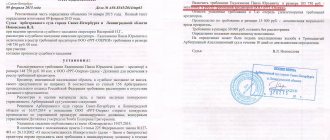Law practice shows that people apply to establish paternity even after the death of their fathers. Mainly for two purposes: for a child born out of wedlock to receive an inheritance or for a child to receive a survivor’s pension.
AiF learned how to do it right.
Such issues can only be resolved in court. In this case, there are two options for establishing the fact of paternity: within the framework of a claim proceeding and within the framework of a more simplified – special proceeding.
What facts need to be proven
When establishing the fact of paternity, the court takes into account the following circumstances:
- the presence of evidence confirming the origin of the child from the alleged father. This may be the conclusion of a genetic examination. This evidence is the most weighty for the court. However, the expert opinion is only one of the means, therefore it is assessed by the court along with other evidence in its entirety;
- recognition by the alleged father of the child. Evidence of recognition of paternity may include photographs, questionnaires, postcards, statements to various authorities, correspondence on social networks and other actions indicating that the man recognized himself as the father of the child);
- cohabitation and management of a common household by the mother and the intended father of the child before the birth of the child. Living in different apartments can also be considered joint if the deceased regularly visited the child’s mother and took part in the costs of running the common household. These circumstances are confirmed in court with the help of documents, checks, photographs, and testimony;
- joint upbringing or maintenance of a child by the mother and the alleged father of the child. This circumstance can be confirmed by photographs, videos, money transfers, purchases of toys, clothes for the child, personal correspondence of the deceased with the child’s mother or with the child himself, from which it becomes clear that the person recognizes his child and is interested in his life.
Often, the consideration of applications to establish the fact of paternity is complicated by objections filed by close relatives of the deceased, including the “official” wife. If the alleged father lived with another family, the court will usually require more evidence. In this case, an examination is necessary.
ALIMENTARY issues-2. We continue to answer questions from readers Read more
Is it possible to determine kinship?
Based on Art. 49 and 50 of the RF IC, the mother of a minor has the right to file an application and establish a blood relationship with the deceased through special or claim proceedings. The case is being considered in court.
This may be required in the following situations:
- participation of a minor in the inheritance procedure;
- desire to establish biological relationship;
- to apply for a pension in connection with the loss of a breadwinner;
- to receive compensation payments if a man died from a violent death while performing his official duties.
Note! The initiator of determining a biological connection can be the mother, guardian or trustee of a minor. If a person is over 18 years old, only he or she has the right to carry out the procedure. An exception is the incapacity of an adult: his interests are represented by guardians.
Relatives' objection
The standard procedure for registering family ties through the court is accompanied by the participation of relatives of the deceased:
- parents,
- grandmothers,
- grandfathers,
- aunts,
- uncles.
Close men may object for obvious reasons: if a relationship is established, the plaintiff’s daughter or son will be able to claim the inheritance.
If you find yourself in such a situation, you need to rely on the judge’s opinion. Often, judges do not grant defendants’ objections without specific grounds; besides, you can present additional arguments and facts in your favor.
The decision can be made without a DNA test.
The marriage was not registered
Determination of blood relationship is required if the marriage of the biological parents was not concluded in the registry office.
If a child was born during marriage or within 300 days after its dissolution, the father is automatically entered as the man with whom his mother is in an official relationship.
The man did not recognize the relationship
The refusal of the deceased to recognize himself as the father during his lifetime is not grounds for refusing to satisfy the application. The full answer is contained in paragraph 23 of the Resolution of the Plenum of the Armed Forces of the Russian Federation dated May 16, 2017 No. 16: if the father was not married to the mother of a minor, the case is considered through special proceedings taking into account the norms of the Code of Civil Procedure of the Russian Federation.
The plaintiff must present the facts.
They depend on the date of birth of the son or daughter, whose biological affiliation is proven:
- Born on March 1, 1996 or later. The provisions of Art. 49 RF IC. You will need explanations from the mother, witness testimony, physical and written evidence, video and audio recordings, and expert opinions.
- Birth from 10/01/1968 to 03/01/1998. The evidence is listed in Art. 48 of the “Code on Marriage and Family of the RSFSR”: cohabitation, household management by mother and father before and after the birth of a child.
Legal advice: regardless of the date of birth of a son or daughter, it is recommended to provide the maximum set of confirmations at the meeting. During the process, any arguments in favor of the plaintiff are considered. If the children were born after March 1, 1996 and you lived with the deceased, you can petition to call witnesses who will confirm this fact.
Elena Plokhuta
Lawyer, website author (Civil law, 7 years of experience)
The man did not deny the relationship
When children are born out of wedlock and in the event of the death of a man, a biological relationship can be recognized through special proceedings if he recognized himself as the father. Any facts are used: testimony of witnesses that the man called the minor his son (daughter), correspondence, etc.
How is the examination carried out?
As part of the trial, an expert examination is ordered by the court. This type of research is carried out by the departments of the State Forensic Expertise Committee. Samples for comparative DNA studies are stored in the SSSE archive for 3 to 10 years (depending on the cause of death of the man). The main question that is posed to experts is whether the biological paternity of the deceased man in relation to the child is confirmed or excluded.
Genetic examination is carried out on a paid basis.
What is the need for recognition of paternity after death?
The sudden death of a father who did not have time to formalize paternity legally puts the common-law spouse in a rather difficult position.
First of all, she needs to learn how to prove paternity after the death of the father out of wedlock.
Otherwise, it will turn out that neither the mother nor the child will have any rights in connection with the death of the father. After all, there are no documents that certify relationship.
The notary will not be able to process the application for acceptance of the inheritance, so you should initially obtain documents about the relationship.
The legislation of 2021 allows posthumous establishment of paternity; only the court is vested with the corresponding powers.
What after the trial?
The court's decision to establish the fact of paternity serves as the basis for the civil registry office to record the act of establishing paternity. That is, the court decision does not replace the documents issued by these authorities. Therefore, as a rule, in a decision, the court assigns the registry office the obligation to draw up such a record of the act of establishing paternity.
Alena SHMANAY, lawyer of the Minsk City Bar Association

Every third dad in Belarus pays attention to the early development of his children Read more
What is this procedure?
Posthumous establishment of paternity or relationship is the process of confirming the relationship between father and child, or between relatives who have common ancestors.
The cause most often is hereditary or other material disputes. Establishing paternity after the father has died is important for protecting the child both formally and financially. The regulations for posthumous paternity establishment are described in the Family Code of the Russian Federation. The procedure is carried out in court according to the rules of civil procedural proceedings.
Evidence accepted by the court when making a decision
Article 55 of the RF IC provides for the evidence that the plaintiff must submit to the judicial authority to consider the case.
- Medical evidence: From medical evidence, let's primarily mention DNA analysis. This procedure can only be carried out if the deceased parent has close relatives, which include mother, father, sister or brothers.
- Letters and written statements: these can be letters sent by the father to a minor child or his mother, as well as applications from the father to enroll the child in clubs or sports sections.
- Witness testimony: Witness testimony may be given directly at the court hearing. This could be explanations from the father’s relatives, his neighbors or work colleagues, which will confirm the family relationship of the spouses. Witness testimony can also include information from government officials who have evidence confirming or refuting the parties’ arguments.
The procedure for recognizing paternity after the death of the father
In the event of the death of a man, the issue can be resolved in court as follows:
- the applicant proves that the man recognized the child (if during his lifetime he knew about the presence of a minor);
- the applicant proves that the child is the son/daughter of the deceased (if he did not know about him during his lifetime).
The procedures are similar. However, the second option can be proven solely by the result of a DNA examination.
In the first case, the applicant must provide evidence that the man knew about the presence of the child, considered him his blood, and showed interest in him.
The list of citizens who can initiate the process is limited by law.
The plaintiff may be:
- mother of a child under 18 years of age;
- guardian;
- child, aged 18 years or older;
- the person raising the child at the time of applying to the court.
The law does not explain the concept of a teacher of a minor. In practice, this capacity can be played by a grandmother, grandfather, aunt or uncle, or adult brothers and sisters. We are not talking about a child receiving a status left without parental care. It’s just that the mother, for personal reasons, refuses to initiate the process, and another person living with the child and his mother can do it independently.
Procedure
The algorithm of actions when registering a relationship if the father has died includes the following steps:
- Preparation of the evidence base.
- Drawing up a statement of claim.
- Sending documentation to the court.
- Trial.
- Obtaining a court decision.
- Making changes to the registry office.
Preparation of the evidence base
To prove paternity, the applicant must prepare a significant number of arguments. As practice shows, 90% of lawsuits fall apart at the trial stage, since the initiator cannot prove his position.
This situation often arises because a person relied too much on the results of a genetic examination. However, there is no possibility of collecting material for research (relatives do not appear in court, the body of the deceased is cremated).
Therefore, it is advisable to prepare all possible evidence in advance.
The court will consider the following information:
- photographs of the baby and deceased parent;
- video footage of a man playing with a child, calling him son/daughter;
- statements from the bank account into which funds were received from the father, marked “for the maintenance of the son” or similar data;
- pregnancy data (copy of exchange card);
- information about childbirth (possibly cohabitants had paired births);
- witness's testimonies.
Documentation
To consider the case you will need:
- statement;
- passport;
- children's documents;
- written evidence (if available);
- receipt of payment of state duty;
- extract from the house register.
Who is the defendant?
The case can be considered in a lawsuit or in a special manner, the presence or absence of a defendant depends on this:
- Claim. Applies if relatives refuse to recognize kinship. They or one of them are the defendants.
- Special. Relevant in the absence of disputes or relatives. There are no defendants.
Drawing up a statement of claim
To go to court, you must prepare a statement of claim. The document is very complex. Therefore, you need to involve a family law lawyer in its preparation. It is better that he has practice in such matters. Saving on a lawyer can negatively affect the outcome of the process.
If the applicant is represented by a lawyer, then his information must also be included. Since the process is civil in nature, when considering an application in the presence of the plaintiff, a notarized power of attorney from the representative is not required.
If the applicant is absent from the process, his interests can be represented by a lawyer only if he has a notarized power of attorney.
Since the marriage is not registered, the minor must have the mother’s surname. When filing a statement of claim, the initiator of the process has the right to include a requirement to change the child’s surname to the surname of the deceased man. If the child has reached 10 years of age, he must give written consent to change the data.
It is not necessary to change the child's last name. This decision is initiated by the applicant. Moreover, it is in the interests of the minor to preserve the mother's surname.
Sending documentation to court
Sending an application to a judicial authority directly depends on the type of application.
The issue can be resolved as follows:
- in the absence of a dispute with the relatives of the deceased partner;
- if the father's relatives refuse to recognize the child.
In the first case, documents are submitted to the court at the place of registration of the initiator of the process. Secondly, at the place of residence of the relatives of the deceased partner.
The law provides for the following options for sending documents to the judicial authority:
- Using a letter (the most successful option).
- Personally the initiator of the process.
- Representative of the plaintiff (with a notarized power of attorney).
Trial
The procedure for the trial varies significantly depending on the type of application considered. This issue can be resolved as follows:
- in accordance with special legal proceedings (in the absence of disputes with the relatives of the deceased);
- in the manner of legal proceedings (if there is a conflict).
Establishing the fact of recognition of paternity (special procedure)
If the posthumous recognition of paternity does not cause disputes and disagreements , it is permissible to use special proceedings - a simplified and expedited trial (Article 50 of the RF IC and Article 264 of the Code of Civil Procedure of the Russian Federation).
The main feature of special proceedings is that the subject of judicial protection is not the violated right, but the legitimate interest of the applicant. The applicant does not enter into a dispute (the presence of a defendant is not assumed in the case), but only asks the court to establish the actual fact based on the evidence presented.
You can submit an application:
- mother of the child;
- a relative (or other person) who is supporting the child;
- guardian or custodian of the child;
- the child himself, after reaching adulthood.
Interested persons are involved in the trial: citizens or institutions, organizations, enterprises whose interests may be affected (for example, a pension fund, if the fact of paternity is established for the purpose of receiving social benefits for the loss of a breadwinner, relatives or other recognized children of the deceased, if the purpose of recognizing paternity is inheritance).
The court will examine all the circumstances and evidence for reliability, and if it considers them plausible and convincing, it will make a positive decision - it will establish the fact of paternity or the fact of recognition of paternity.
Establishment of paternity (claim procedure)
If the court finds that the case of posthumous confirmation of paternity causes a dispute (for example, among relatives regarding the division of inheritance), it is no longer permissible to consider it in special proceedings. You will have to go to court through a lawsuit (according to Article 49 of the RF IC).
Unlike special proceedings, filing a claim in court involves parties - a plaintiff and a defendant - who are engaged in an adversarial dispute for their own interest or right.
You can file a claim:
- mother of the child;
- a relative (or other person) who is supporting the child;
- guardian or custodian of the child;
- the child himself, after reaching adulthood.
Defendants in a lawsuit can be citizens (for example, relatives of the deceased) or institutions, organizations, enterprises with which the plaintiff has a dispute regarding possible paternity.
Both parties have the right to present circumstances, give arguments, present their own evidence, bring in witnesses, and ask the court to request additional evidence.
The claim procedure for establishing paternity is longer and more complex than the special procedure, since it involves resolving the dispute.
Deadlines
Lawyers advise starting the judicial procedure for establishing paternity as soon as possible - while documents, photographs, testimony about the relationship between the deceased father and child have been preserved, and the process of proof does not become difficult.
But the law does not establish any limitation period for such cases. You can go to court at any time . Even after a son or daughter reaches adulthood, he will be able to independently apply to the court for recognition of a family connection with his dead father.
The duration of the trial is 2 months , after which another 1 month is the period for the court decision to enter into legal force (according to Article 154 of the Code of Civil Procedure of the Russian Federation). However, in practice, the period established by law for consideration of the case may be delayed (for example, if the evidence turns out to be insufficient, and the court invites witnesses, demands the presentation of additional evidence, or orders an expert study).
Expenses
If the application is filed with the court in the interests of a minor child (for example, by a mother, guardian or trustee), there is no need to pay a state fee - it is enough to refer to the provision of Part 15, Clause 1 of Art. 333.36 Tax Code of the Russian Federation.
If the application is submitted to the court in one’s own interests (by an adult son or daughter of a deceased father), the amount of the state fee will be 300 rubles (according to Part 8, Clause 1, Article 333.19 of the Tax Code of the Russian Federation). Details for paying the state fee can be obtained directly from the judicial authority that will consider the case.
For carrying out the registration procedure at the civil registry office (making changes to vital records and issuing certificates) - the state fee is paid separately. Its amount is 650 rubles (according to Part 5, Clause 1, Article 333.26 of the Tax Code of the Russian Federation). Details for paying the state fee can be obtained directly from the registry office, which will register paternity and make changes to the birth certificate.
State duty
When applying to a judicial authority, a fee of 300 rubles is paid. When issuing a new birth certificate after legal proceedings, the fee will be 650 rubles.
Obtaining a court decision
The period for a court decision to enter into legal force depends on the type of decision:
- if the defendant was present in court or the issue was considered in a special manner, then the document becomes valid after 30 days;
- if the defendant avoided appearing in court and the decision was made in his absence (in absentia), then it becomes valid after 60 days.
Making changes to the registry office
If the court, after considering the evidence, sided with the plaintiff, then the applicant must receive a court decision. After which, the document must be brought to the registry office.
Important! The court also sends an extract from the court decision to the civil registry office within 3 days from the date of its entry into force.
The plaintiff must present:
- the court's decision;
- passport;
- child's birth document;
- child’s passport (if available);
- receipt of payment of the duty;
- document about the death of a man.
Information is provided in original form. As a result, a specialist from the Civil Registry Office issues a new birth document and a certificate of recognition of paternity. Information about the father is entered into the birth registration book.
Reasons for establishing paternity after death
The death of the father puts the child's mother in a difficult position. The common-law spouse will need to prove paternity in court. Otherwise, she will not have documents confirming the relationship between the man and the child.
Posthumous establishment of paternity is necessary in order to:
- Apply for survivor benefits for a minor child;
- Receive moral compensation if the man’s death was violent;
- Enter the details of the deceased spouse on the child’s birth certificate;
- To accept the inheritance of a deceased father.
Practice shows that women who were not officially married to their spouse find themselves in this situation. Even if a man considered the child to be his own before his death, but did not have time to register paternity in the registry office, he will have to go to court. Establishing paternity after death will also be required if the parents did not live together and the man denied his relationship with the child.








